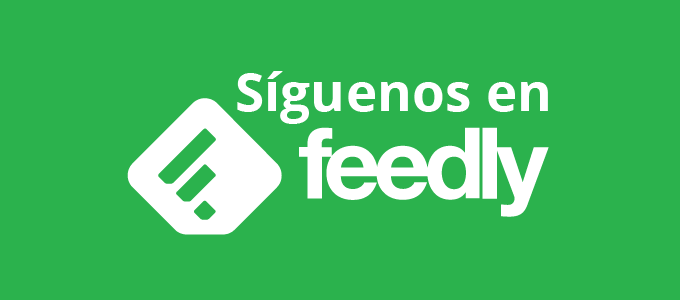Onboarding
The time has come when, after a complicated and highly nervous period, the company and the new worker begin a close relationship of mutual knowledge. At these times, the newly hired employee will feel very lost because he or she does not know everything about the company and the job to which he or she is going to be assigned.
How did you feel on your first day at work? And what did others do to make you feel part of the company as quickly and comfortably as possible?
He employer branding, understood as the way in which a company creates its good or bad reputation with its present and future workers, finds in this period of incorporation of new employees a good way to conceive that positive vision that is had about it.
Currently, companies adopt, in most cases, isolated and poorly defined measures to try to facilitate the rapid adaptation to the position of new employees. In many cases, it is the worker who, through an autonomous trial-error procedure, acclimatizes himself to the position.
The basic objective of the traditional Welcome Plan is accompany this new worker through a series of actions, often poorly defined in their coupling process, helping them to know their role within the company.
From the moment you say yes until your incorporation is complete and your performance is optimal, a period of time passes that It can be shortened or extended depending on the design, execution and evaluation of a process called “Onboarding” or “From desk to yes”.. A means of integration that goes beyond the Welcome Plan so that a new worker feels part of the company from the first moment.
Differences between Welcome Plan and Onboarding
The essential difference between a traditional Welcome Plan and “Onboarding” is that the former, generally, only consist of the one-way transmission of information by the company to the new worker and the application of some specific training action. generic. “Onboarding” means lead, guide and mentor to the new worker so that he or she assumes the corporate culture, gets involved and fits into the team in a dynamic way for a period that can extend up to one year, even beginning in the selection process itself.

“Onboarding” must be adapted and flexible depending on the characteristics of the company, the sector in which it operates and the particularities of the position to be filled. There are more operational jobs with repetitive, homogeneous and routine functions where effective integration can be achieved in a few weeks and others, with many managerial functions that require greater coordination with other people and more time for acclimatization.
The challenge of “Onboarding” is to coordinate teams and agendas that allow creating human, personalized and unique integration experiences, allowing a new worker to feel an essential part of the company from the first minute. Having effective Onboarding for new workers is an essential factor to be able to retain that talent, increasing the good external image of the company and undoubtedly improving the work environment.
Advantages of “Onboarding” compared to the Welcome Plan
- Resolve all the doubts and questions that a newly arrived worker has at the same moment they arise.
- Reduces the adaptation period.
- Provides the new worker with a standardized integration process designed and supervised by HR.
- Reduces the turnover rate and voluntary resignations.
- The worker assumes the organizational culture and work methodologies quickly, thus increasing the feeling of belonging.
- Their motivation, involvement and self-esteem increase considerably.
- The talent contribution of the new worker to the company is more dynamic.
- The company's employer branding improves considerably.
Key and differentiating elements of the Welcome Plan and Onboarding
| Reception plan | Onboarding |
| Welcome. This stage should include broader training about the company, its activities, the places where it is present, as well as resolving any general questions the worker may have. Brochure or Welcome Manual. This document must contain basic and practical information about the company, the most common procedures, instructions, standards, the services offered by the company, quality standards, etc. Departmental integration. In this phase, your Immediate Boss must intervene, being in charge of introducing you to your colleagues, telling you the functions that each one performs and how you should interact with them. Training. It is highly recommended that some training sessions be planned, which will be adapted to the sectors and positions of each worker. | First day. Luggage delivery: Greeting at reception and accompaniment to the assigned work area. Human Resources will accompany you at all times. Assignment of workstation, laptop, mobile phone, directories, accesses, etc. Meeting with the Department Heads and the work team. Delivery of monthly work planning. There are companies that schedule the first day on Tuesday. This allows the integration team to have everything prepared for the week. Communication of the new incorporation on the company intranet, emails, etc. Shadowing. Explanation about what is done in the company and about the work tools. Shadowing lasting three days. Accompanied by several expert colleagues from the Area to see how you resolved the cases, their work method, etc. Explanation about what is done in the company and about the work tools. Internal functioning of the company (schedules, holidays, etc.). 1-2-1 Manager. Weekly meeting with the Manager to talk about their performance. Onboarding Day. A whole day with other new employees where the Managers explain the history of the company, products, sales, types of clients, CSR, benefits, etc. Design a Tour of the Facilities. This occurs especially in large companies. It can take place during a whole day, in which the new employee is taken to see all the most important facilities and offices. Welcome Ceremony. Some companies have a tradition of holding a welcome event to welcome their new employees. Follow-up meetings. Follow-up meeting every three months to see the degree of integration, impressions, sensations, expectations met, etc. In these meetings, the worker will receive feedback on how the company is evolving and what aspects need to be readjusted. Help searching for an apartment. This is especially important in cases where there has been a change of residence, whether to another region or another country. Assignment of a mentor. There are companies that directly appoint a mentor for the new hire, who is usually a co-worker who helps them resolve their doubts with confidence and introduces them to the company culture with the closeness that a professional who is on their own gives them. level. |
If you are interested in training and developing professionally in the field of human resources, you can find out about our Master in HR: People Management, Talent Development and Labor Management.




































